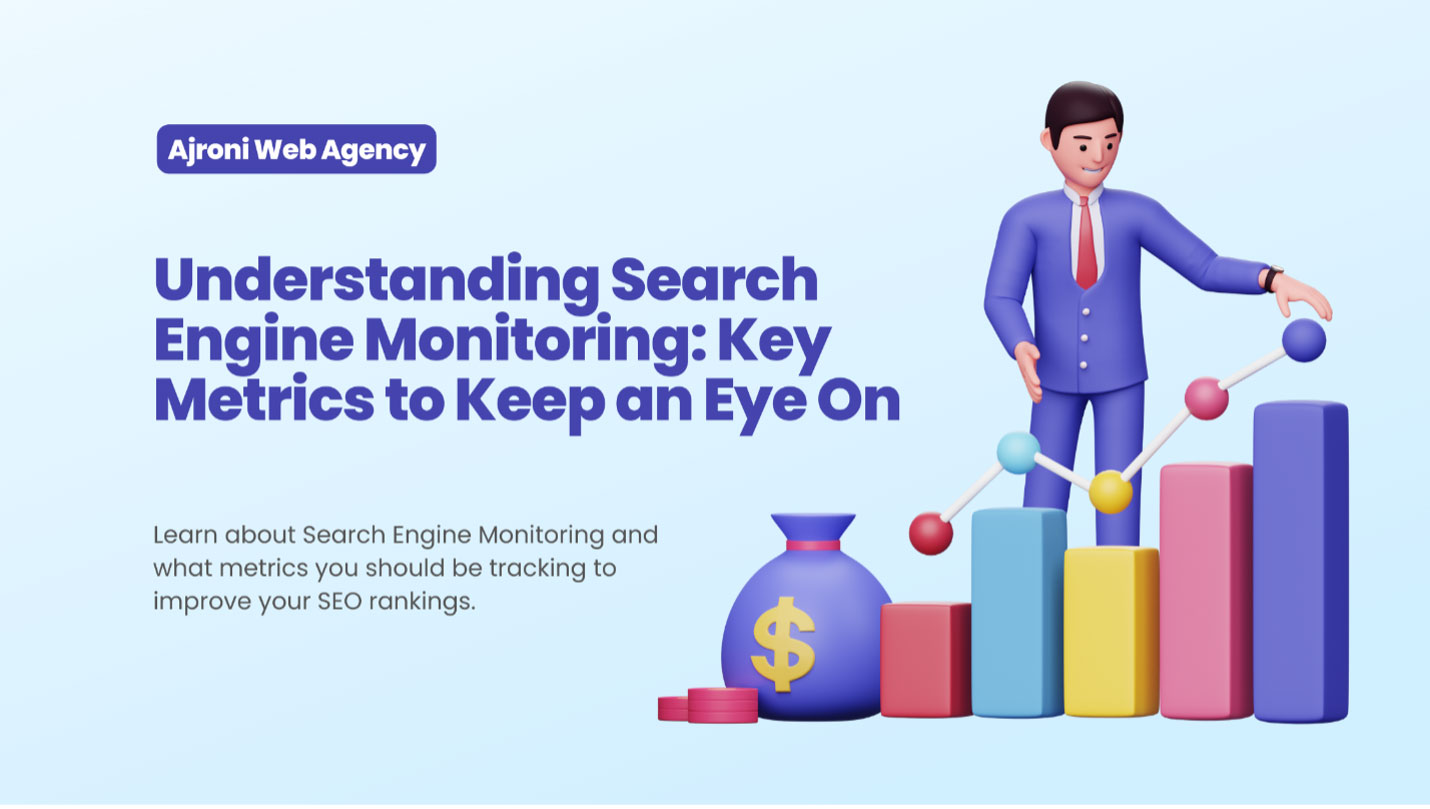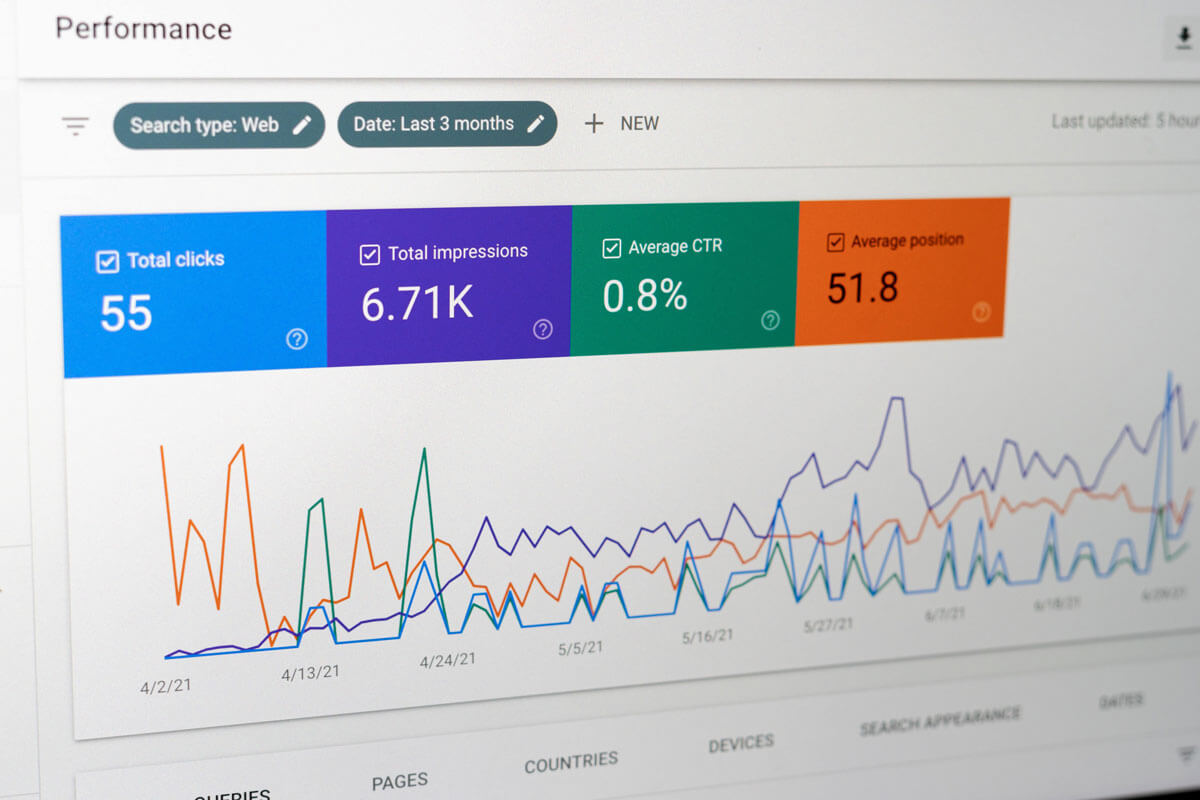Search engine monitoring helps you understand where your website stands on the internet. It shows how visible your site is to people who might be looking for what you offer. This guide will take you through what you need to know and do to keep track of your site's performance.
What is Search Engine Monitoring
Defining Search Engine Monitoring
Search engine monitoring is about keeping an eye on how your website performs in search results. It tells you if your site is easy to find for people using keywords related to your business. Knowing this can help you make your website better and more visible.
Core Areas of Monitoring
There are four main areas to focus on: how high your site ranks, how often it shows up in searches, how well your site works, and what your competitors are doing. Each area has specific metrics that tell you something important about your site's performance.
- Rankings: This is about where your site appears in search results for important keywords. If your site is higher up, more people are likely to click on it.
- Visibility: This measures how often your site appears in search results across different keywords. High visibility means your site shows up often, giving you more chances to attract visitors.
- Technical SEO: This area looks at how well your site is built for search engines. It includes checking if your site loads fast, works well on mobile phones, and if all your pages are correctly indexed by search engines.
- Competitor Analysis: Understanding what your competitors are doing can help you find ways to outdo them. This includes watching their rankings, the keywords they target, and how they optimize their sites.
Monitoring these areas helps you spot problems, find opportunities, and make better decisions for your website.
Key Metrics to Monitor SEO
To truly understand and enhance your website's performance, monitoring certain key metrics is essential. These metrics offer insights into user behavior, financial success, and overall brand visibility on the internet. Below is an in-depth look at each metric and its significance.
1 Clicks and Impressions
Clicks measure the actual engagement by counting how many times users have clicked on your website link in search results. A high number of clicks indicates that your page titles and meta descriptions are compelling and relevant to search queries. Analyzing click data helps in understanding what attracts visitors to your site, allowing for targeted improvements in your SEO strategy.
Impressions count how often your site shows up in search results, regardless of whether users click on it. Tracking impressions offers insights into your site's visibility for specific keywords. If your impressions are high but clicks are low, it’s a signal to revise your titles, descriptions, or the content of the page to make them more appealing to potential visitors.
2 Keyword Rankings
The position of your website in search results for specific keywords is what keyword rankings are all about. High rankings can significantly increase your site’s visibility and lead to more organic traffic. Keeping an eye on these rankings helps identify which keywords are most effective in driving traffic and which ones need more work.
Improving your keyword rankings involves optimizing your website’s content and technical SEO aspects. Regularly monitoring these rankings allows you to quickly adapt to changes in search engine algorithms and maintain or improve your visibility in search results.
3 Revenue
Revenue from organic search is a critical metric for gauging the profitability of your SEO efforts. By tracking revenue, you can directly link your search engine performance to financial outcomes, making it easier to justify investments in SEO.
Monitoring revenue also helps identify which keywords and landing pages are most valuable in terms of generating income. This enables you to focus your optimization efforts where they can produce the greatest financial return, optimizing your site’s content strategy to target high-value queries.
4 Conversions and Conversion Rate
Conversions reflect the success of your website in persuading visitors to take a desired action. This could range from making a purchase to signing up for a newsletter. Understanding your conversion metrics allows you to fine-tune your website’s design, content, and user experience to maximize the number of visitors who convert.
The conversion rate is a key performance indicator that measures the efficiency of your website in converting visits into actions. A higher conversion rate means your site is effectively meeting the needs and expectations of your audience, which is central to the success of your online business.
5 Missed Brand Searches
Missed brand searches indicate a lost opportunity when potential customers search for your brand or products but don’t find your website in the search results. Tracking this metric can reveal issues in your SEO strategy that may be preventing your site from appearing for branded searches.
Addressing missed brand searches often involves optimizing your website for your own brand keywords and ensuring your content accurately reflects what users are searching for. This can significantly increase your site’s visibility for searches directly related to your brand, capturing more targeted traffic.
6 Brand Visibility
Brand visibility in search results measures how prominently your brand appears for searches related to your business. High visibility means potential customers are more likely to find and click on your website when searching for your brand or products.
Improving brand visibility requires a strategic approach to SEO, including optimizing your website for brand-related keywords and creating content that enhances your brand’s presence in search results. This not only attracts more traffic but also reinforces brand recognition and trust.
7 Customer Lifetime Value (CLV)
Customer Lifetime Value (CLV) estimates the total revenue a business can expect from a single customer over the course of their relationship. This metric is vital for understanding the long-term value of SEO efforts and guiding strategic decisions about where to allocate marketing resources.
Increasing CLV involves enhancing the user experience, maintaining high customer satisfaction, and encouraging repeat business through effective online engagement. Focusing on CLV can lead to more sustainable growth by prioritizing the retention of high-value customers.
8 Content Engagement
Content engagement looks at how visitors interact with your site's content. Metrics such as time spent on page and pages per session offer insights into the relevance and quality of your content. High engagement levels indicate that your content is meeting the needs of your audience, encouraging them to explore your site further.
Improving content engagement involves creating high-quality, valuable content tailored to your audience's interests and needs. It also means optimizing the layout and presentation of your content to make it more accessible and engaging, enhancing the overall user experience on your site.
9 Engagement Rate by GA4
The engagement rate by GA4 is a new metric introduced with Google Analytics 4
, which offers a more nuanced view of how users interact with your website. Unlike traditional metrics, the engagement rate encompasses a variety of user actions, such as page views, scrolling, clicks, and video views. This
comprehensive approach provides a deeper understanding of user behavior on your site.
Improving the engagement rate by GA4 involves optimizing your website’s content and design to encourage more interaction from visitors. By analyzing this metric, you can identify areas of your site that are effectively engaging users and areas where improvements are needed. Strategies might include enhancing the quality of your content, improving site navigation, and ensuring your site is responsive and fast-loading.
Utilizing Data for Strategic Decisions
Turning the vast array of data from search engine monitoring into actionable insights is crucial for refining your SEO and marketing strategies. This section will guide you through leveraging data to make informed decisions that drive your website's success.
Interpreting Data for SEO Strategy
Interpreting data begins with understanding the story behind the numbers. For instance, a drop in keyword rankings may indicate a need for content optimization or an adjustment in your backlink strategy. By regularly reviewing your
performance metrics, you can identify trends, pinpoint issues, and uncover opportunities to enhance your search visibility and user engagement. Implementing changes based on these insights ensures that your website remains competitive
and relevant.
Aligning SEO and Business Goals
Aligning your SEO strategy with your overall business goals is essential. Data from conversions and revenue metrics can help you evaluate the ROI of your SEO efforts. If certain keywords or content types are driving higher revenue,
focusing your efforts on these areas can yield better financial results. Additionally, understanding customer lifetime value helps prioritize targeting and retaining high-value customers through personalized content and offers.
Challenges and Solutions in Search Engine Monitoring
While search engine monitoring is invaluable, it comes with its set of challenges. Overcoming these obstacles is key to maintaining an effective SEO strategy that adapts to the ever-evolving digital landscape.
Dealing with Algorithm Updates
Search engines frequently update their algorithms, which can significantly impact your website's rankings and visibility. Staying informed about these updates and analyzing their effects on your metrics is crucial. Regularly auditing
your website for compliance with the latest SEO best practices can mitigate negative impacts and capitalize on changes that may benefit your site.
Data Accuracy and Privacy Concerns
Ensuring the accuracy of the data you collect and addressing privacy concerns are ongoing challenges. Utilize reliable tools and platforms for data collection and analysis to improve accuracy. Regarding privacy, adhere to regulations
such as GDPR and CCPA by implementing transparent data collection practices and giving users control over their information. This not only ensures compliance but also builds trust with your audience.
Overcoming Analysis Paralysis
The sheer volume of data available can be overwhelming, leading to analysis paralysis. To avoid this, focus on metrics that directly impact your key performance indicators (KPIs) and business goals. Establishing a streamlined process
for regular data review and action planning can help keep your team focused and productive.
By embracing strategic data utilization and navigating the challenges of search engine monitoring, you can enhance your website's performance, achieve your business objectives, and stay ahead in the competitive digital marketplace.
Final Ideas
Search engine monitoring is more than just a task on your digital marketing checklist; it's a strategic tool that can significantly influence the success of your website and business. By focusing on key metrics like clicks and impressions, keyword rankings, revenue, and conversion rates, you gain valuable insights into your website's performance and user behavior. This data not only informs your SEO strategy but also aligns with broader business goals, ensuring that your online presence is not only visible but also profitable and engaging for your target audience.
Embracing the challenges that come with search engine monitoring, such as algorithm updates and data privacy concerns, and overcoming analysis paralysis, requires a proactive and informed approach. By staying updated on best practices, utilizing reliable tools, and focusing on actionable insights, you can navigate these challenges effectively.
As the digital landscape continues to evolve, the importance of adapting and refining your search engine monitoring practices cannot be overstated. With the right strategies and tools, you can turn data into strategic decisions that drive growth, enhance user engagement, and secure a competitive edge in your industry.
Additional Resources
To further your understanding and capabilities in search engine monitoring and optimization, here are some recommended resources and tools that can help:
Tools for Search Engine Monitoring and SEO:
- Google Analytics 4 (GA4): For advanced engagement metrics and comprehensive insights into user behavior.
- Google Search Console: Provides critical data on search performance, technical issues, and visibility.
- SEMrush: A comprehensive SEO toolkit for keyword research, competitor analysis, and site audits.
- Ahrefs: Offers detailed insights into your backlink profile, keyword rankings, and SEO health.
- Moz: Known for its domain authority metric, Moz also offers tools for site audits, keyword research, and link analysis.
Educational Resources:
- Google's Search Engine Optimization (SEO) Starter Guide: A must-read for understanding the basics of SEO and best practices.
- Search Engine Journal: Offers the latest news, trends, and guides on SEO and digital marketing.
- Moz Blog: Provides in-depth articles on SEO strategies, studies, and emerging trends.
- Ahrefs Blog: A great resource for actionable SEO tutorials, case studies, and research.
Communities and Forums:
- SEO Subreddit (r/SEO): A community where SEO professionals and enthusiasts share insights and ask questions.
- WebmasterWorld: A forum for webmasters to discuss search engines, including Google, Bing, and others, and share strategies.
Leveraging these tools and resources will enhance your search engine monitoring efforts, keeping you informed and ahead of the curve in your SEO strategies. Remember, the key to success in digital marketing is continuous learning and adaptation.




